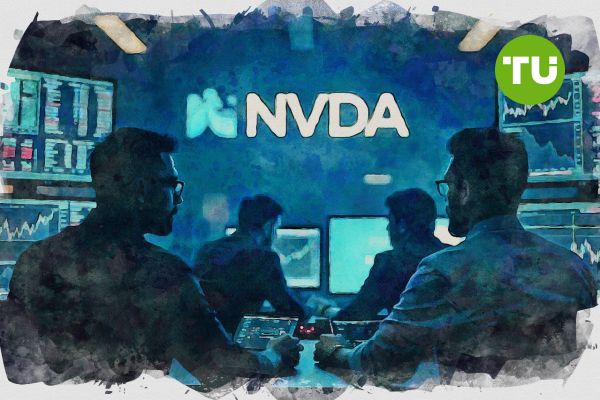Nvidia stock jumps to $141 as rally makes it most valuable U.S. company
 Nvidia’s gross margins are projected to expand from 61% to between 70% and 80% in 2025
Nvidia’s gross margins are projected to expand from 61% to between 70% and 80% in 2025
As of May 4, Nvidia stock is trading at $141.22, up 2.8% in 24 hours, extending its upward momentum and reclaiming its position as the most valuable publicly traded U.S. company with a $3.45 trillion market cap.
Highlights
- Nvidia stock rose 2.8% to $141.22, becoming the most valuable U.S. company with a $3.45 trillion market cap.
- Technical indicators suggest a bullish breakout, with $150 as the next key resistance level.
- Strong AI chip demand and expanding margins continue to drive investor confidence.
Nvidia (NASDAQ: NVDA) has clearly broken out of a bullish consolidation phase, completing a flag pattern that suggests further upside is likely. The recent close above $140 marks the continuation of a strong uptrend that began in early 2023. Notably, the 50-day moving average ($125.80) has crossed above the 200-day moving average ($109.65), forming a classic golden cross—a strong bullish indicator.
Short-term support lies near $121, which corresponds to Nvidia’s prior resistance from March and aligns with a high-volume area on the chart. A further support zone exists around $115, coinciding with the 50-day moving average. Resistance levels to watch are $143—where price action struggled in February—and more importantly, $150, a round-number psychological barrier and a former ceiling from late 2024.

NVDA stock price dynamics (April 2025 - June 2025). Source: TradingView
The Relative Strength Index (RSI) is currently around 65, indicating strong bullish momentum but not yet in overbought territory. Volume has been rising during upswings and tapering off during pullbacks—another confirmation of a healthy rally structure. This pattern suggests that institutional buyers are accumulating shares without triggering sharp price spikes. As long as this volume behavior continues, it reinforces the sustainability of the current uptrend.
Market context: AI chip demand boosts investor appetite
Nvidia’s recent surge is being driven by record-breaking demand for its AI and data center products. The company’s Blackwell chip architecture is expected to revolutionize large-scale model training and inference, allowing for up to 30x efficiency improvements over the previous Hopper generation. This has led analysts at UBS to boost their price target to $175, citing Nvidia's potential to capitalize on an AI infrastructure market that could reach $1 trillion over the next decade.
Moreover, Nvidia’s gross margins are projected to expand from 61% to between 70% and 80% in 2025—signaling both pricing power and operational efficiency. The company’s forward-looking revenue estimates remain robust, with double-digit year-over-year growth expected in data center and AI segments.
However, broader market headwinds persist. U.S.-China geopolitical tensions, particularly involving chip exports and intellectual property, remain a risk factor. Additionally, the U.S. Department of Commerce’s recent investigation into semiconductor imports could increase regulatory oversight and potentially limit international expansion. Still, Nvidia continues to attract institutional inflows as a core AI play, with hedge funds increasing exposure over the past quarter.
Nvidia targets $150, potential breakout to $160
Given its current trajectory and strong technical and fundamental backing, Nvidia is well positioned to test the $150 resistance level in the short term. If price closes above $150 with volume confirmation, a further leg higher toward $160 is likely within the next few weeks.
Conversely, if Nvidia faces rejection at $150, a pullback to $121 or even the 50-day moving average at $115 would be a healthy consolidation. This would still maintain the overall bullish structure, providing fresh entry opportunities for long-term investors.
Nvidia’s bullish technical outlook is backed by strong fundamentals, with fiscal Q1 revenue rising 69% year-over-year to $44.06 billion. The surge is fueled by intense demand for its AI and data center chips, including the H100 and upcoming B100 models.













































































































































